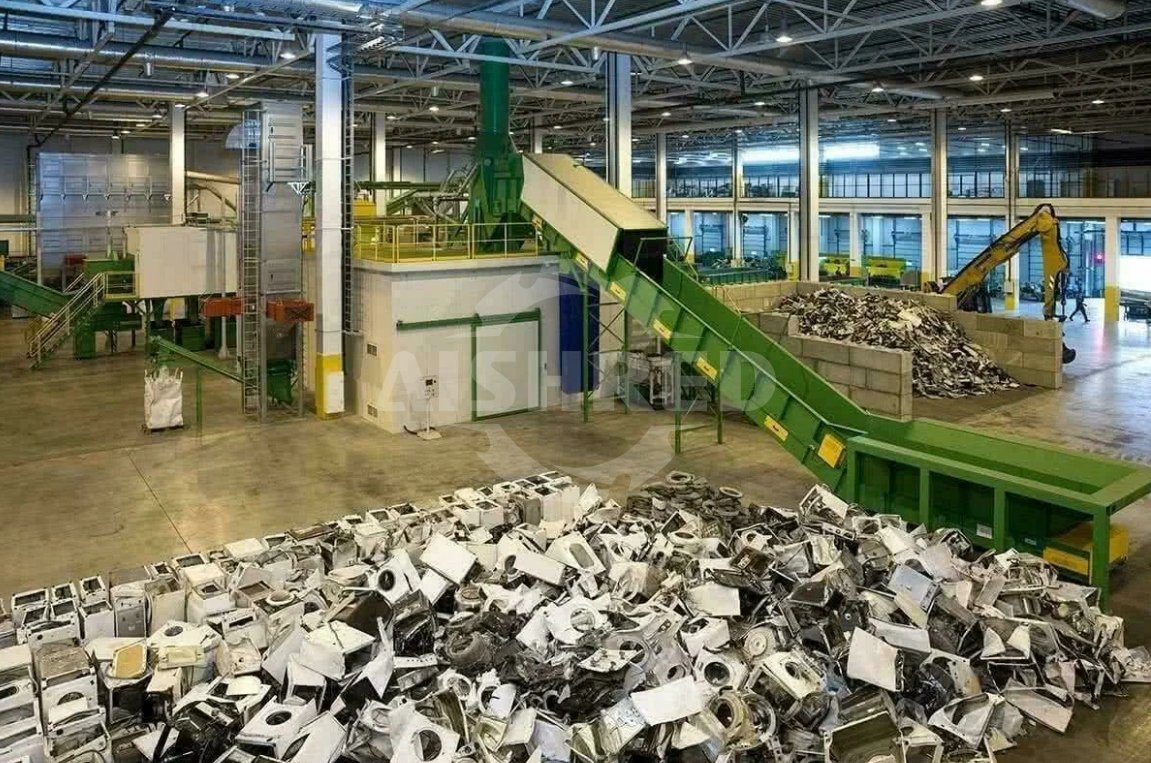Building a WEEE recycling and treatment center requires strategic planning, advanced technology, and compliance with international environmental standards. This guide outlines a comprehensive framework for entrepreneurs, investors, and organizations seeking to enter the global e-waste management market. It emphasizes product-specific recycling processes, flexible operations, and regulatory adherence.

Understand Regulations and Licensing
Research Local and International Laws
- Comply with the EU WEEE Directive, the Basel Convention (regulating hazardous waste movement), and regional laws (e.g., U.S. EPA regulations, India's E-Waste Management Rules).
- Secure permits for hazardous waste handling, emissions, and international material transfers.
Certifications
Aim for ISO 14001 (environmental management), ISO 45001 (occupational health and safety), and industry standards like R2v3 or e-Stewards for responsible recycling.
Design a Flexible Facility Layout
Incoming Waste Storage: Categorize WEEE (e.g., large appliances, ICT equipment) with dedicated zones. Use climate-controlled areas for batteries and mercury-containing items.
Processing Zones:
- Disassembly Lines: Segregated by product type (TVs, fridges, laptops, etc.).
- Material Recovery Areas: Equip with shredders, magnetic separators, optical sorters, and eddy current systems.
Hazardous Waste Units: Isolated zones for refrigerant recovery, circuit board treatment, mercury lamp processing, and battery handling.
Product-Specific Recycling Processes
1. Televisions and Monitors
CRT Screens:
- Manually remove plastic housing and PCBs.
- Mechanically separate screen and funnel glass; isolate leaded components.
- Safely extract phosphor dust using enclosed vacuum systems.
LCD/LED Screens:
- Dismantle backlights to recover mercury-containing fluorescent tubes.
- Separate polarizing films, glass layers, and aluminum frames.
2. Refrigerators and Air Conditioners
- Recover refrigerants (CFCs/HFCs) using certified tools.
- Extract compressors, oils, and foam insulation.
- Shred and sort copper, steel, aluminum, plastics, and residual foam.
3. Computers and IT Equipment
- Extract reusable parts (e.g., CPUs, RAM) for resale.
- Shred PCBs and process with hydrometallurgy for gold, silver, and palladium recovery.
- Degauss and destroy hard drives for data security compliance.
4. Washing Machines and Small Appliances
- Dismantle motors, wiring, counterweights (metal/concrete).
- Separate stainless drums, plastic casings, and circuit modules.
- Filter and recycle balance water where applicable.
Invest in Technology and Automation
- Smart Disassembly Robots: Improve precision in battery and hazardous component removal.
- AI-Based Sorting Systems: Use image recognition and machine learning for high-speed material classification.
- Pollution Control Equipment: Install acid gas scrubbers, dust extractors, and acoustic barriers.
Build a Skilled Workforce
- Roles to Hire: EHS officers, e-waste technicians, chemical analysts, IT security specialists.
- Training & Certification: Collaborate with institutions like IERI or ISWA to offer continuous training.
Implement Global Best Practices
- Traceability Systems: Leverage RFID, barcodes, or blockchain for end-to-end material tracking.
- Circular Economy Integration: Partner with OEMs for take-back programs and raw material buyers for direct offtake.
- Public Outreach: Conduct awareness campaigns, school programs, and local e-waste drives.
Financial Planning and Market Strategy
- Startup Costs: Typically range from $2 to $5 million for a mid-size facility (equipment, licenses, staff, and training).
- Revenue Channels: Profits from recovered materials (precious metals, copper, plastics), carbon credits, subsidies, and service contracts.GEP ECOTECH E-Waste Recycling Equipment and Solutions
As a trusted provider of solid waste recycling equipment and system solutions, GEP ECOTECH offers cutting-edge technology tailored for WEEE processing. Our systems are engineered to efficiently dismantle, shred, and separate electronic waste components while ensuring environmental compliance and operator safety.
Core Equipment for E-Waste Processing:
- Double-Shaft Shredders (GD Series): For primary shredding of bulk electronics, enclosures, and mixed e-waste.
- Fine Shredders (GS Series): For secondary size reduction of PCBs, cables, and plastics.
- Intelligent Sorting Systems: Integration of magnetic, eddy current, and optical sorters for precise material recovery.
- Battery Shredding Solutions: Safe systems for shredding charged lithium batteries without pre-discharge, minimizing fire risk.
Turnkey System Capabilities:
- Modular lines for processing CRTs, LCDs, refrigerators, IT hardware, and more.
- Live-cell shredding systems to handle active batteries under inert or water mist environments.
- Dust and VOC control systems for environmentally sound operations.
- Smart control platforms with real-time monitoring, diagnostics, and automation.
With global project experience and an advanced manufacturing base, GEP ECOTECH delivers reliable, cost-effective WEEE recycling solutions for governments, recyclers, and industrial enterprises.
A successful WEEE recycling center must blend regulatory compliance, advanced processing, and transparent operations to address the 53.6 million metric tons of e-waste generated globally each year. By customizing processes for various devices and investing in smart systems, businesses can unlock sustainable profitability. Resilience requires ongoing audits, adaptive licensing, and strong ecosystem partnerships that promote circularity and environmental stewardship.

